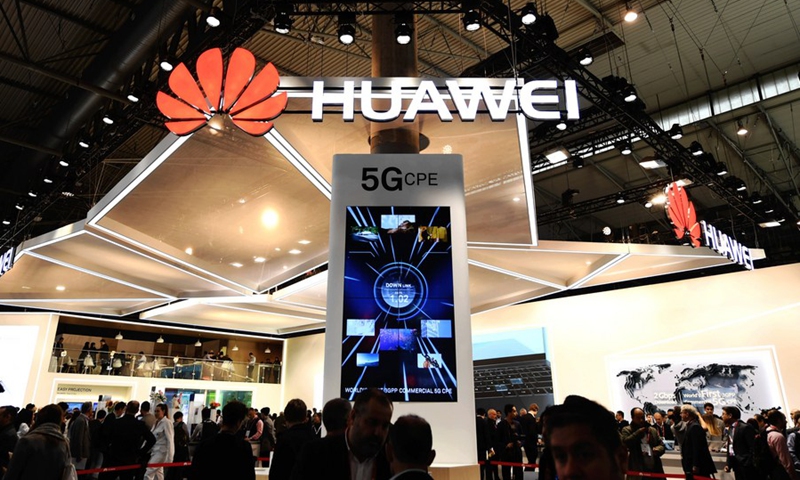
Photo taken on Feb. 26, 2018 shows a screen displaying the 5G technology at the booth of China's telecom giant Huawei during the 2018 Mobile World Congress (MWC) in Barcelona, Spain.(Photo: Xinhua)
The 5G user penetration rate has exceeded the 20 percent threshold in countries such as China, South Korea and Kuwait where 5G is developing quickly, triggering a positive cycle of user growth, business returns and network construction, a senior Huawei executive said on Thursday.
In countries where 5G is developing fast, operators who have invested heavily in 5G have seen remarkable returns, Ryan Ding, Huawei's executive director and president of the carrier business group, said at the 2021 Global Mobile Broadband Forum (MBBF) held in Dubai from Wednesday to Thursday.
He said that operators will realize business value only when the 5G user penetration rate is high enough. When the 5G user penetration rate reaches a threshold of 20 percent, rapid development of 5G will follow.
In China, South Korea and Kuwait, operators have been quick to provide continuous nationwide coverage, giving users a consistent experience. They also offer flexible service packages, which deliver a win-win result for both users and themselves. In addition, these operators are providing a tangible improvement over 4G, accelerating user migration and network evolution, according to Ding.
Huawei has been facing a severe US crackdown for years, which has strangled its smartphone business and forced it to move into other sectors that can take advantage of its 5G capabilities and empower the digital transformation of industries.
However, the Chinese tech giant is not ready to give up on the overseas market, and is still ambitiously maintaining its dominant position in the telecommunications industry.
Ding said that 5G has become a new engine for the growth of the mobile industry, and that to adapt to the rapid growth of data traffic, the whole industry will need to keep pursuing innovations in power supply, distribution, use, and management, as well as building greener 5G networks with higher performance and lower energy consumption.
Huawei has already deployed low-carbon solutions in more than 100 countries, including Saudi Arabia, Greece, Pakistan, and Switzerland, helping operators reduce carbon dioxide emissions by 40 million tons.
“Huawei will continue to put green development at the center of everything it does and will develop innovative solutions to build greener 5G networks with operators worldwide,” said Ding.
